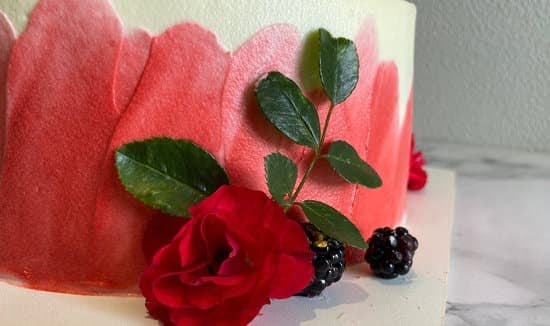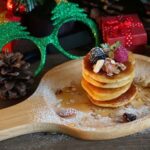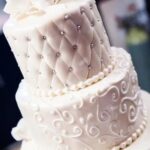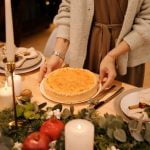Welcome to the wonderful world of cake decoration, where creativity knows no bounds and every design is a work of art. From classic techniques to innovative styles, cake decoration has the power to transform a simple dessert into a masterpiece that delights both the eyes and taste buds. In this article, we will explore the different types of cake decoration and discover the endless possibilities they offer.
Cake decoration is not just about making a cake look pretty; it is an expression of love and celebration. Whether it’s a birthday, wedding, or any special occasion, a beautifully decorated cake sets the mood and adds a touch of elegance to any event. The way a cake is decorated can make all the difference, taking it from ordinary to extraordinary.
Classic cake decoration techniques have stood the test of time for their timeless appeal and versatility. Smooth frosting gives cakes a polished finish, while piped borders add intricate detailing. Rosettes create a touch of elegance with their delicate petals. These techniques have been passed down through generations and continue to be cherished by bakers worldwide.
But there’s more to cake decoration than just classic techniques. Fondant brings magic into play with its ability to sculpt intricate designs and cover cakes flawlessly. Buttercream frosting offers endless possibilities with its smooth texture that can be piped, textured, or even ombre effect achieved. And let us not forget about creative coloring techniques that breathe life into edible masterpieces.
With so many options available, it’s impossible not to be captivated by the world of cake decoration. So join us on this journey as we explore these various techniques, share tips and tricks from experienced bakers, and inspire you to unleash your own creativity in creating stunning cake decorations that leave everyone mesmerized. With endless possibilities at your fingertips, it’s time to turn every slice into an edible work of art.
Classic Cake Decoration Techniques
Classic cake decoration techniques have stood the test of time for a reason. These traditional methods, such as smooth frosting, piped borders, and rosettes, continue to captivate cake enthusiasts with their timeless appeal and versatility. Let’s take a closer look at these classic cake decoration techniques and discover how they can elevate the presentation of your delicious creations.
Smooth Frosting
One of the most fundamental classic cake decoration techniques is achieving a smooth finish with frosting. This technique involves applying a layer of frosting to the cake and using various tools to create a flawlessly even surface. Smooth frosting provides a sleek and polished look that serves as an ideal canvas for further decorative elements.
Piped Borders
Piping borders is another traditional cake decoration technique that adds elegance and definition to your creations. With piping bags filled with buttercream or royal icing, you can create intricate patterns around the edges of your cakes. From simple scallops to ornate scrollwork, piped borders allow for endless creativity to complement any theme or occasion.
Rosettes
Rosettes are delicate buttercream decorations that resemble beautiful swirls of flowers. They add a touch of elegance and charm to any cake design. By using a closed star piping tip, you can easily create lovely rosettes on your cakes or cupcakes. Cluster them together or scatter them throughout for a stunning floral effect that will impress both visually and texturally.
Classic cake decoration techniques like smooth frosting, piped borders, and rosettes offer a timeless beauty that never goes out of style. Incorporating these elements into your cake designs will not only enhance their visual appeal but also showcase your skills as a decorator. So, whether you are baking for special occasions or simply want to indulge in some creative expression, don’t hesitate to embrace these classic techniques as the building blocks for your edible masterpieces.
Fondant Magic
Delve into the world of fondant and its ability to create stunning designs. Fondant is a smooth, pliable icing that is often used to cover cakes and create intricate decorations. It allows cake decorators to achieve a flawless, professional look that is sure to impress. In this section, we will explore the process of working with fondant and showcase various techniques for creating beautiful designs.
The Basics of Working with Fondant
Working with fondant requires some basic tools and techniques. Before starting, it’s important to have a clean and smooth surface to roll out the fondant. Dusting powdered sugar or cornstarch on your work surface can prevent sticking and make it easier to handle. A rolling pin specifically designed for fondant can help you achieve an even thickness when rolling out the icing.
Once the fondant is rolled out, it can be draped over the cake using a smoother tool to gently press it onto the surface and remove any air bubbles or wrinkles. Trimming off excess fondant with a knife or pizza cutter will give the cake a clean, polished appearance.
Creating Intricate Designs
One of the most fascinating aspects of working with fondant is its versatility in creating intricate designs. Fondant can be shaped and molded into almost any shape imaginable, allowing cake decorators to let their creativity run wild.
Covering cakes with fondant provides a blank canvas for decoration. It can be adorned with elaborate patterns using textured mats or embossing tools. Alternatively, pieces of colored fondant can be cut into shapes like flowers, leaves, or lace designs and applied as decorations on top of the covered cake.
For those looking for more advanced techniques, figurines made from fondant can be crafted to sit atop cakes. From cartoon characters to realistic animals, these edible creations add whimsy and personality to any cake.
Buttercream Beauties
One of the most versatile and delicious cake decoration techniques is buttercream frosting. With its smooth, creamy texture and delectable taste, buttercream can transform any cake into a work of art. Whether you’re a professional baker or a home enthusiast, mastering the art of buttercream decoration is sure to impress both your eyes and taste buds.
There are numerous techniques for working with buttercream frosting that can elevate your cake design. Different piping tips allow you to create various effects, from delicate ruffles to bold borders. Piping flowers and intricate designs using buttercream adds an element of elegance and sophistication to your cakes. You can also experiment with creating texture using spatulas or combs, giving your cakes a unique look and feel.
Achieving a perfectly frosted cake requires knowledge of proper technique. One key tip is to crumb coat your cake before applying the final layer of frosting. This thin layer helps to seal in any loose crumbs and provides a smooth base for the final frosting layer.
To achieve a flawless finish, use an offset spatula or bench scraper to spread the frosting evenly across the sides and top of the cake. It may take practice to create clean lines and sharp edges, but with patience and attention to detail, anyone can achieve a beautifully frosted cake.
Buttercream frosting also offers endless opportunities for creativity. Experimenting with different colors allows you to customize your designs, whether it’s matching party themes or creating vibrant ombre effects. Mixing flavors into the buttercream can add an extra layer of complexity to your cakes – think chocolate mint, lemon raspberry, or even lavender vanilla.
Creative Cake Coloring
Cake decoration is not just about the design and techniques used, but also about the colors that are incorporated into the edible masterpiece. Creative cake coloring plays a crucial role in enhancing the overall design of a cake and can truly elevate it to a work of art. In this section, we will explore the importance of colors in cake decoration, various coloring techniques, and provide examples of how creative cake coloring can have a significant impact.
Colors have the power to evoke emotions and set the mood for any occasion. When it comes to cake decoration, choosing the right colors is essential in conveying the desired message or theme. For example, vibrant and bold colors are often used for festive celebrations like birthdays or weddings, while pastel shades create an elegant and delicate look suitable for baby showers or tea parties.
There are numerous coloring techniques that can be used to achieve different effects on cakes. Gel-based colors are commonly used by bakers as they provide intense pigmentation without altering the consistency of frosting or batter. Airbrushing is another popular technique for creating smooth gradients and adding dimension to cakes.
This method allows for precise control over color application and can create stunning effects like watercolor designs or realistic airbrushed flowers. Marbling is yet another technique that involves swirling multiple colors together to create a unique marble-like effect on cakes.
To showcase the impact of creative cake coloring, let’s take a look at some examples. One popular trend is ombre cakes, where multiple shades of the same color are expertly blended from light to dark, creating a gradual fading effect. This technique is often used in wedding cakes and adds a touch of sophistication and elegance.
Another eye-catching design made possible with creative cake coloring is rainbow cakes. These delightful creations feature layers or swirls of different vibrant colors reminiscent of a beautiful rainbow. They are perfect for birthday parties or celebrations where you want to spread joy with each slice.
Overall, creative cake coloring opens up endless possibilities for cake decorators to experiment and create visually stunning and delicious delights. By choosing the right colors and utilizing various coloring techniques, it is possible to transform a simple cake into a true work of art that not only tastes amazing but also mesmerizes with its beauty. So, don’t be afraid to mix art into your edible masterpieces and let your creativity shine in every colorful slice.
| Coloring Techniques | Impact on Cake Design |
|---|---|
| Gel-based Colors | Intense pigmentation without altering consistency |
| Airbrushing | Smooth gradients and realistic effects |
| Marbling | Captivating marble-like designs |
Whimsical Fillings and Toppings
When it comes to cake decoration, it’s not just about the outer appearance. Whimsical fillings and toppings can take your cake decor to new heights, adding an extra layer of flavor and visual appeal. From unique cake fillings to inventive ideas for cake toppings, there are endless possibilities to explore in creating edible masterpieces.
One aspect that can truly elevate a cake is the filling. Gone are the days of plain vanilla or chocolate fillings. Today’s cake enthusiasts are looking for something more adventurous and flavorful.
Fruit compotes, flavored creams, and ganaches are just a few examples of trendy fillings that can bring a burst of deliciousness to your cakes. Whether it’s a tangy raspberry compote layered between moist vanilla sponge or a silky hazelnut cream filling with chocolate cake, these whimsical fillings add depth and complexity to the overall flavor profile.
In addition to creative fillings, there is a wide variety of toppings that can transform an ordinary cake into a work of art. Edible flowers provide a fresh and vibrant touch, while chocolate shards add elegance and texture. Mirror glazes create a stunning glossy finish that reflects light and catches the eye. These innovative toppings not only enhance the visual appeal but also provide unique flavors and textures that complement the cake itself.
| Cake Filling | Topping |
|---|---|
| Raspberry Compote | Fresh Berries |
| Matcha Flavored Cream | Edible Gold Leaf |
| Mango Passionfruit Ganache | Coconut Flakes |
This table provides a glimpse into the exciting world of cake filling and topping combinations. The possibilities are truly endless, allowing you to experiment with flavors, textures, and visual elements to create cakes that are not only stunning but also delectable.
Outside the Slice
Cake decoration has come a long way from smooth frosting, piped borders, and classic rosettes. In recent years, bakers and cake enthusiasts have taken cake decor to new heights by exploring unconventional and innovative methods. These alternative cake decoration techniques not only add visual appeal but also create a unique and modern twist to traditional designs.
One popular alternative to traditional cake decoration is naked cakes. These rustic-looking cakes have gained popularity for their exposed sides, showcasing the natural beauty of the cake layers. Naked cakes are often decorated with fresh flowers, berries, or dusted with powdered sugar for a simple yet elegant look.
Drip cakes have also emerged as a trendy option for those seeking a more whimsical design. With their overflowing glazes or ganache dripping down the sides of the cake, drip cakes create an eye-catching effect that is both delicious and visually appealing.
Another stunning alternative to explore is geode cakes, which mimic the natural formation of crystals found in rocks. By using edible ingredients such as rock candy or isomalt sugar, bakers can create intricate designs that resemble geodes and add a touch of elegance and glamour to any occasion.
To keep up with the ever-evolving world of cake decoration, it’s essential for bakers and enthusiasts to embrace these beyond-the-slice techniques. By stepping outside traditional boundaries and experimenting with different styles, they open themselves up to endless possibilities in creating stunning and memorable cake masterpieces that truly stand out from the crowd.
Some alternative techniques for cake decoration include:
- Enchanting mirror glazes: Mirror glazes give cakes a glossy finish that reflects light in mesmerizing patterns.
- Gravity-defying structures: Create gravity-defying floating tiers or suspended elements within your cake design.
- Hand-painted designs: Embrace your inner artist by hand-painting intricate designs on your cakes using edible paints.
- 3D sculpted cakes: Sculpt cakes into various shapes and objects, using techniques such as carving and layering.
By incorporating these unique cake decoration styles, bakers can create show-stopping centerpieces that not only taste delicious but also leave a lasting impression. The possibilities are endless when it comes to exploring alternative cake decoration techniques, so why not let your creativity soar and take your cakes to new heights?
Custom Cake Decor
When it comes to celebrating special occasions, cake decoration plays a crucial role in creating personalized cake masterpieces. The demand for custom cake decorations has been on the rise as people seek unique and special designs that reflect their personality and style. This section will explore the process of working closely with customers to achieve their dream cake designs and highlight memorable examples of personalized cakes and the stories behind them.
Creating personalized cake masterpieces starts with understanding the customer’s vision. It is important to have open communication and actively listen to their ideas, preferences, and expectations. Whether it’s a wedding cake, birthday cake, or any other special occasion, each customer has a story they want their cake to tell. Taking the time to understand this story allows the decorator to translate it into a visually stunning design.
Once the vision is clear, it’s time for brainstorming and sketching. Collaborating with the customer during this creative process helps ensure that their ideas are transformed into reality. From selecting colors and themes to choosing unique elements like fondant figurines or edible prints, this stage allows for customization at every level. The goal is not only to create a beautiful cake but also one that truly captures the essence of the occasion.
There are countless examples of personalized cakes that have become cherished memories in people’s lives. From elegant wedding cakes adorned with delicate sugar flowers representing each season of their love story, to whimsical birthday cakes featuring favorite characters or hobbies, these creations leave an indelible mark on both the celebrant and their guests. Each slice holds not only delicious flavors but also sentiments that make those moments even more special.
Creating personalized cake masterpieces is an art form that requires skill, creativity, and a deep understanding of individual tastes and preferences. As customers continue to seek unique designs that stand out from traditional options, decorators have an opportunity to showcase their talent by bringing these visions to life. By working closely with customers and translating their stories into beautiful cake designs, custom cake decoration turns every occasion into an unforgettable celebration.
Conclusion
In conclusion, cake decoration truly offers endless possibilities for creating visually stunning and delicious delights. From classic techniques like smooth frosting and piped borders to the artistry of fondant and buttercream, there are a multitude of methods to explore.
The use of colors and unique fillings and toppings further elevate the beauty of cakes, while alternative decoration methods like naked cakes and geode cakes bring a modern twist. And let’s not forget the power of personalized designs that make each cake truly special.
Cake decoration is more than just an added touch – it’s an art form that can transform a simple cake into a masterpiece. The techniques discussed in this article showcase the versatility and creativity that cake decorators possess. Whether you’re a beginner or an experienced decorator, there is always something new to learn and discover in the world of cake decoration.
So, I encourage all readers to embrace their creativity and try different styles of cake decoration. Don’t be afraid to experiment with different colors, textures, and techniques. The possibilities are truly endless when it comes to cake decoration, so let your imagination run wild.
Frequently Asked Questions
What are the 5 kinds of cake decorating?
The five main kinds of cake decorating are buttercream, fondant, royal icing, ganache, and marzipan. Buttercream is a classic choice that involves using a smooth and creamy frosting made with butter and powdered sugar and can be easily piped or spread onto the cake. Fondant is a smooth and pliable icing that can be rolled out and draped over the cake, creating a clean canvas for more intricate designs.
Royal icing is a firm icing made with egg whites and powdered sugar that hardens when dry, making it suitable for intricate piping work. Ganache is a glossy mixture of chocolate and cream that can be poured over cakes for a sleek and luscious finish. Marzipan is an almond-based paste that can be molded into various shapes or rolled out to cover cakes.
What decorations to put on a cake?
There are countless decorations you can put on top of a cake to add visual appeal. Some common options include fresh flowers, whether real or edible ones made from gum paste or fondant. Another popular choice is piping detailed designs using buttercream or royal icing in different colors to create borders, flowers, scrolls, or personalized messages on the cake’s surface.
Edible pearls, sprinkles, or even glitter dust can also be used to add sparkle and texture to the cake’s appearance. For themed cakes, plastic figurines or cake toppers representing specific characters or symbols related to the theme may be used as decorations.
What are the 7 types of icing?
The seven primary types of icing are buttercream, royal icing, fondant (also known as rolled icing), ganache, cream cheese frosting/icing, whipped cream topping/icing, and glaze. Buttercream is made by creaming together butter and powdered sugar until light and fluffy; it’s versatile – suitable for simple spreads or more intricate designs through piping techniques. Royal icing consists of egg whites beaten with powdered sugar until it forms stiff peaks; it dries hard after application, making it excellent for creating intricate designs and decorations. Fondant is a smooth and pliable icing made from sugar, water, and gelatin that can be rolled out and draped over cakes for a seamless finish.
Ganache is a mixture of chocolate and heavy cream, resulting in a rich and glossy icing that can be poured over cakes or whipped until lighter. Cream cheese frosting is made by combining cream cheese, butter, powdered sugar, and vanilla extract; its tangy flavor pairs well with carrot cake or red velvet cake. Whipped cream topping is made by whipping heavy cream with powdered sugar until light and fluffy; it’s often used to frost or fill cakes. Glaze consists of powdered sugar mixed with liquid (such as milk or fruit juice) to create a thin yet flavorful icing that can be drizzled over the cake’s surface.

Welcome to our cake decorating blog! My name is Destiny Flores, and I am the proud owner of a cake decorating business named Cake Karma. Our mission is to provide delicious, beautiful cakes for all occasions. We specialize in creating custom cakes that are tailored specifically to each customer’s individual needs and tastes.





